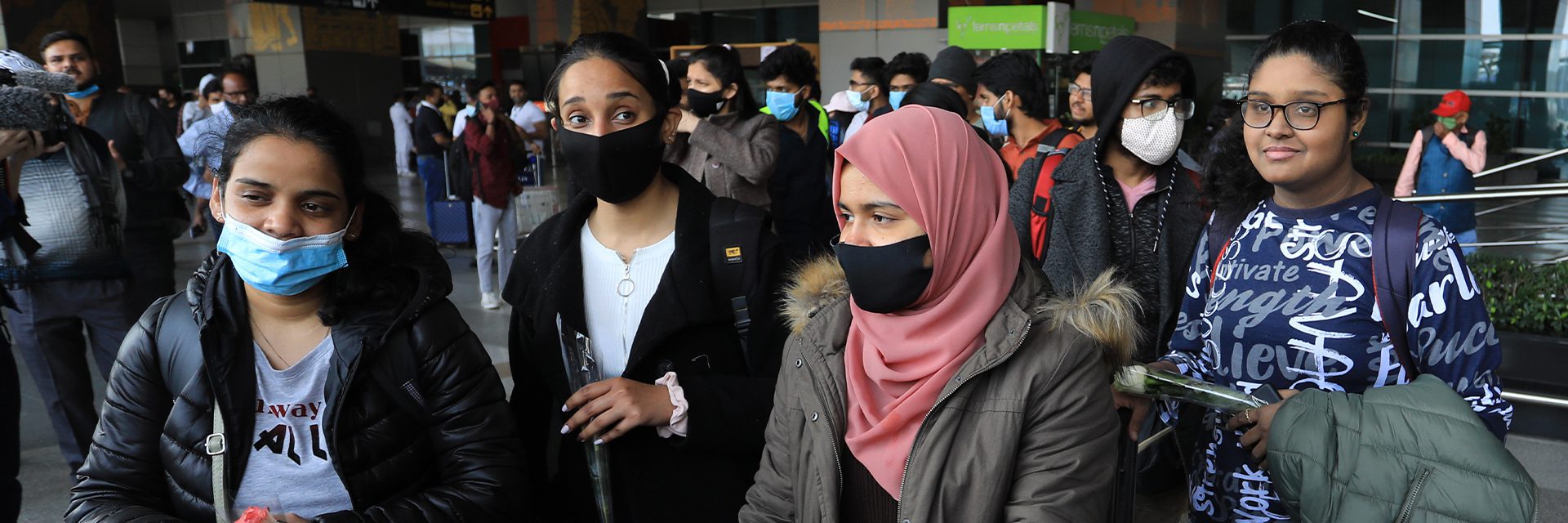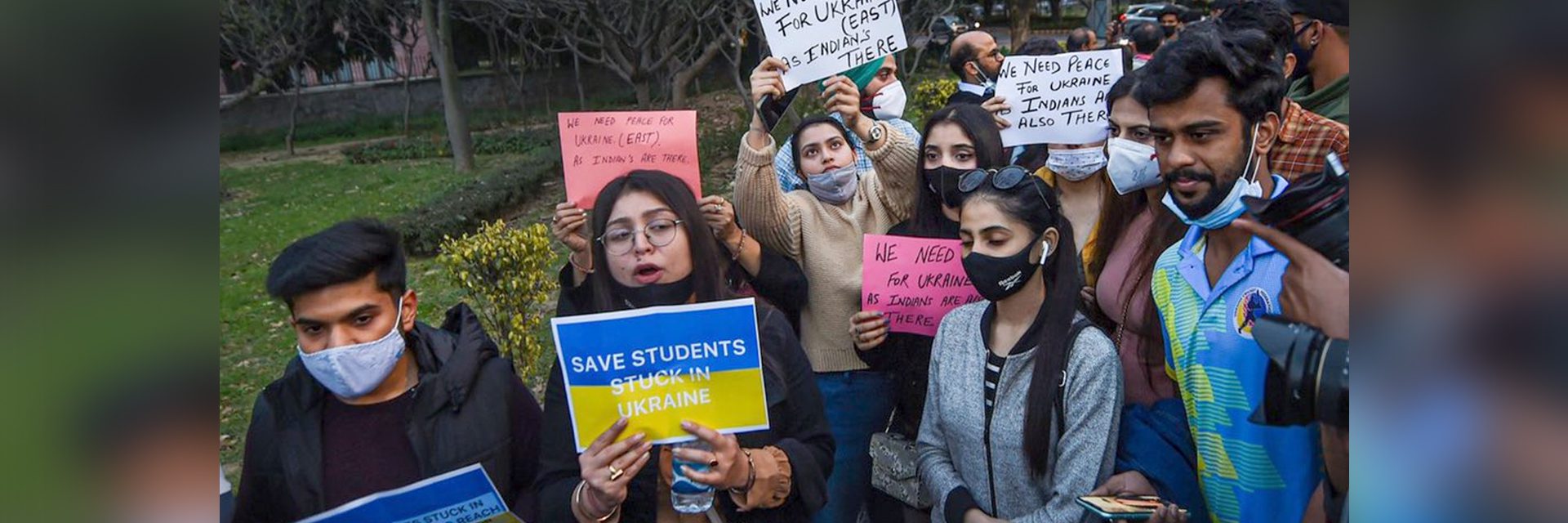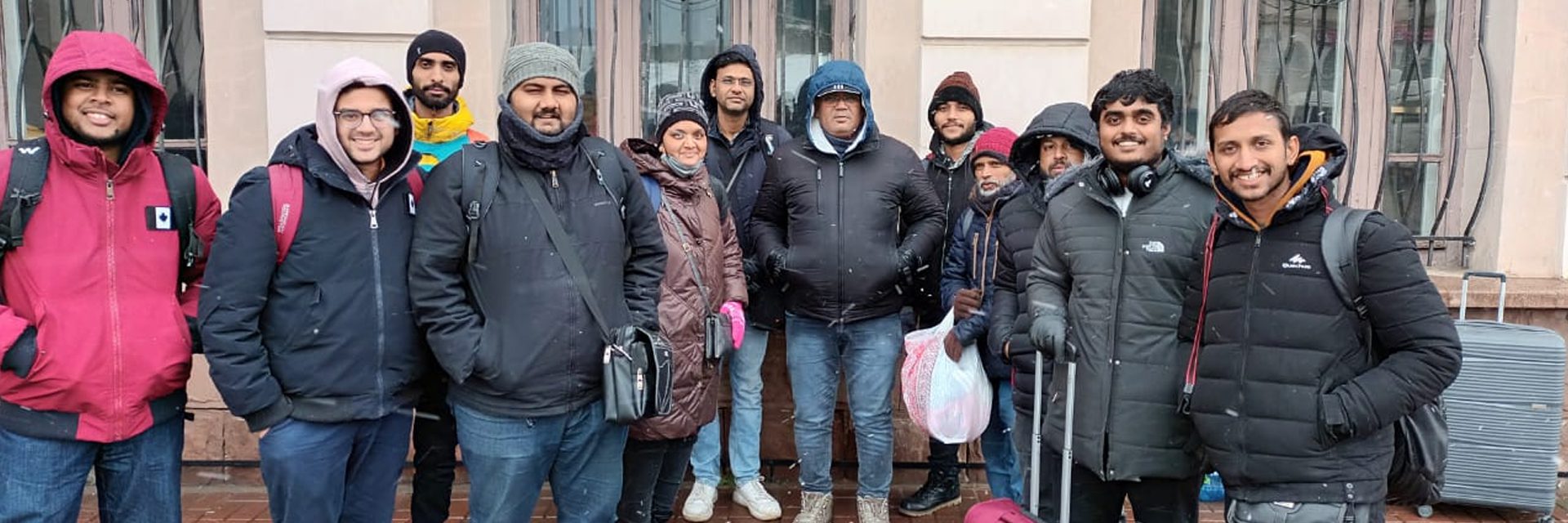Being the largest democracy in the world, India has always stepped up for its citizens across the globe in times of uncertainties and war, and over the years, have evacuated hundreds of thousands of Indians.
(March 15, 2022) Operation Ganga, the Indian evacuation amid Russia’s invasion into Ukraine, came to a close last week as one of the most-proactive operations conducted by any country in the world. India is no stranger to evacuations and has successfully transported lakhs of people out of war-torn countries, often with limited resources at its disposal. Let’s take a look at some of India’s most significant evacuations.
Kuwait airlift, 1990
The August 1990 evacuation of 1,76,000 Indians from Kuwait after the Iraqi invasion, is in the Guinness Book of World Records as the largest evacuation by air. In India, the VP Singh government had begun its tenure only months earlier and had to step up to a mammoth task when it seemed war was inevitable in the Middle East. The first challenge was arranging planes. The solution came from minister of surface transport, KP Unnikrishnan, writes ambassador KP Fabian in the Frontline. Ambassador Fabian was the focal point for the evacuation of Indians from Kuwait in 1990. A few months earlier, a fleet of A-320 aircraft had been mandatorily grounded after a plane crash in Bengaluru. The ban was quickly lifted by the cabinet.
On August 13, 1990, the director-general of civil aviation, MR Sivaraman, was instructed to head to the airport from office, take an Airbus 320 from Mumbai to Kuwait, and bring home the first batch of Indians. He left at once, without even a passport in hand, to oversee the evacuation efforts. The 170,000 Indians were brought home safe in what remains one of the largest evacuation operations in Indian history.
Operation Sukoon, 2006
When Israel and Lebanese militant group Hezbollah declared war in 2006, it gave way to Operation Sukoon. The Beirut Sealift, as it is also known, is one of the largest evacuations conducted by the Indian navy and extended to the evacuation of Sri Lankan and Nepalese nationals as well as Lebanese nationals with Indian spouses. Some 2,280 people were evacuated with the help of four Naval vessels – INS Mumbai, INS Betwa, INS Brahmaputra and INS Shakti, under the tactical command of Rear Admiral Anup Singh. They were brought to the port of Larnaca in south-east Cyprus where they boarded flights home.
#OperationSukoon |
Year: 2⃣0⃣0⃣6⃣
2,280 people evacuated(3/8) pic.twitter.com/xKc70Fa7ZT
— INDIA NARRATIVE (@india_narrative) March 4, 2022
Operation Safe Homecoming, 2011
18,000 Indian nationals working in Libya found themselves trapped in one of the bloodiest civil wars in modern history, when a series of protests broke out against Muammar Gaddafi. What began as unrest in February 2011 continued till October that year and was described by journalist Richard Engel as “a war. An open revolt.”
With chaos and violence unfolding even at Tripoli’s central airport and the temporary closure of Libyan ports, evacuation was a mammoth task.
Two of the Indian Navy’s biggest destroyers – the INS Mysore and INS Aditya, along with the largest amphibious vessel, INS Jalashwa were employed to sail from Mumbai to Libya on February 26. Two other ships were also chartered – the 1,200-seat MV Scotia Prince and the 1600-seat La Superba, which were to sail from Sicily to Libya as soon as the preparations were made. The navy and charter ships evacuated passengers from Tripolia and Benghazi to Alexandria and Air India flew passengers out of Egypt. By the time the naval vessels arrived, much of the evacuation had been carried out by Air India and the charter ships.
The Indian aviation giant performed its role admirably, after Libyan authorities gave India permission to land in Tripoli. Two Air India planes flew 500 passengers to Delhi and Mumbai, evacuated another 1,000 people from Sabha airport and the same number from Sirte.
The operation came to an end on March 10, 2011. Over 15,000 Indian nationals had been evacuated, with around 3,000 deciding to remain in Libya.
Operation Raahat, 2015
Three-day old Parvati was flown to Kochi from Yemen in an incubator, battling jaundice and severe respiratory problems. Flown to India with an accompanying doctor on board, she was rushed for treatment upon arrival, one among 5,600 people who were evacuated from war-torn Yemen.
Violence in Yemen had increased slowly, as tensions rose between forces loyal to former President Abdrabbuh Mansour Hadi and the Houthis, who allied with the Zaidi Shia rebels.
With Indian evacuees in constant touch with officials and journalists from home, their harrowing travels across the country to Aden and Sana’a were known. More than 100,000 people fled their homes that year.
Afghan Senator Anarkali Honaryar thanks @narendramodi&Indian govt for airlifting her,to safety,from Kabul
Be it #OperationRaahat when we rescued 4000+ people from 48 nationalities in Yemen in 2016 or current evacuation in #Afghanistan, Modi Govt has always placed humanity first pic.twitter.com/DWCRQACvrF
— Sanju Verma (@Sanju_Verma_) August 21, 2021
By 2015, India was known for carrying out efficient evacuation operations. Some 26 countries reached out, requesting assistance in rescuing their citizens, including the US, UK, Germany, France, Bangladesh and Sri Lanka. The US State Department even issued an advisory asking citizens in Yemen to contact the Indian embassy in Sana’a. Nearly one in six people rescued by India was a foreign national, including three Pakistanis, in a rare moment of cooperation between the otherwise embattled nations. Incidentally, Pakistan returned the favour, rescuing 11 Indians from Yemen’s Mokallah and sending them back to India in a special plane.
Vande Bharat Mission, 2020
A complex repatriation operation began in January 2020, when Covid-19 cases first began to spike in Italy and Iran. Air India and other low-cost carriers offered free flights to Indians who needed evacuation. The Vande Bharat Mission, as it came to be known, began on May 7 over 12 countries, to bring back 15,000 citizens. Over 67,000 evacuation requests were registered by May 8, with the MEA. Twenty days later, this number had increased to over 3,00,000, significantly surpassing the Kuwait airlift.
Commercial aircraft and naval ships were pressed into action, with over 10 lakh Indians expected to return home. The INS Jalashwa and INS Magar were sent to the Maldives, while INS Shardul and INS and Airavat set sail to the UAE where some two lakh people waited. The Navy christened its efforts ‘Operation Samudra Setu’. On August 6, the MEA said that almost 950,000 Indians were repatriated.
Fifth #AirIndia flight under the #VandeBharatMission
helped around 350 passengers journey between India and Israel. Nesia Tova Chaverim! 🇮🇳🇮🇱 pic.twitter.com/QxcnCdOm3C— India in Israel (@indemtel) December 1, 2020
Operation Devi Shakti, 2021
Some 800 people were brought home in a complex evacuation mission that followed the Taliban’s takeover of Afghanistan. On August 17, 2021, a day after the fall of Kabul, PM Modi chaired a meeting of the Cabinet Committee on Security to ensure that Indians, along with its Afghan partners, would be safely evacuated. On August 16, 40 Indians were airlifted from Kabul as the Taliban arrived. A C-17 Globemaster dispatched by the Indian Air Force brought back 168 people to the Hindan Air Force Station near Delhi. Others were evacuated to Dushanbe, the capital of Tajikistan, were an IAF C-180J transport aircraft awaited. As the situation deteriorated rapidly, some Indians were evacuated by NATO and flown to Doha in American aircraft, where specially-arranged commercial planes brought them home to Delhi.



